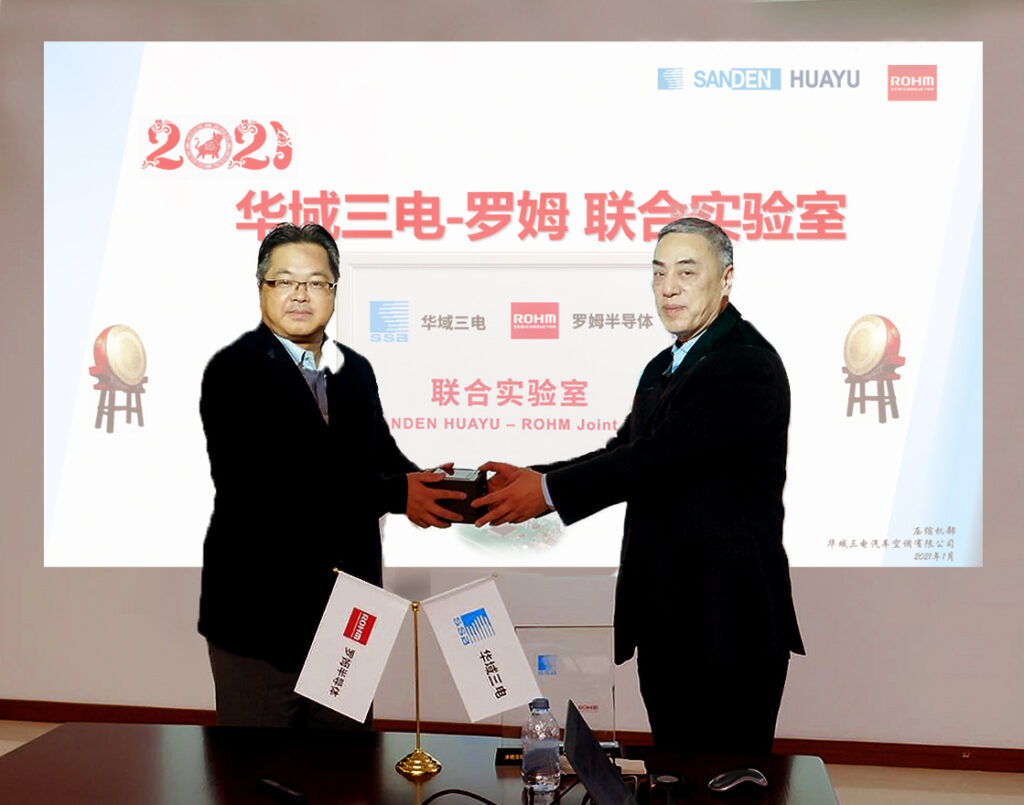ROHM Semiconductor, together with Sanden Huayu Automotive Air-Conditioning Co., Ltd. (China’s largest manufacturer of automotive air conditioners), recently held an opening ceremony announcing the establishment of a joint technical laboratory at Sanden Huayu’s headquarters in Shanghai, China. This new joint laboratory contains important equipment required for evaluating devices and automotive applications, primarily automotive air-conditioning systems.

Since 2018, ROHM and Sanden Huayu have carried out technical exchanges and collaborated on developing automotive applications equipped with advanced power devices, such as ROHM IGBTs. As a result, electric compressors utilizing ROHM IGBT power devices and peripheral components have been in mass production since October 2020. Going forward, the two companies will continue to strengthen their collaborative relationship to accelerate the development of innovative solutions by evaluating ROHM power devices along with IPMs that combine driver ICs with peripheral components.
“With ROHM, which has been introducing power devices since 2018, we have strengthened our collaboration, including our top management,” said Mr. Yao Yi, Sanden Huayu’s Assistant General Manager, Chief Engineer and Technical Center Director. “After more than two years of technical exchanges, we are pleased to have been able to develop and mass produce IGBT-equipped automotive applications this year. The establishment of this joint laboratory is a testament to the deepening relationship between our two companies, and we can look forward to further technical support through this new comprehensive facility.”
Dr. Kazuhide Ino, Senior Corporate Officer and CSO for ROHM stated, “We are pleased to have established a joint laboratory with Sanden Huayu, a leading manufacturer of automotive air conditioners. ROHM has been developing advanced power devices in a range of fields, from silicon power devices to SiC power devices, and boasts a proven track record of providing power solutions that combine peripheral components such as driver ICs. Through this joint lab, we will strengthen our collaborative partnership and contribute to technical innovation in the automotive sector by providing power solutions that meet both customer needs and market trends.”
